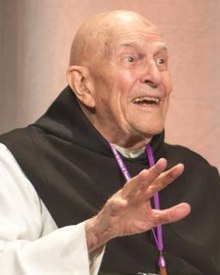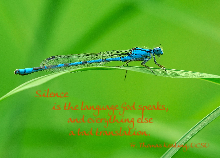
Is Quaker Worship Meditation?
17,015 views
Aug 11, 2017
259
QuakerSpeak26.1K subscribers
SUBSCRIBE
Unprogrammed Quaker worship is easy to mistake for meditation—an hour of silence where everyone has their eyes closed. But how are they different? We asked 5 Friends who have experience with both traditions. SUPPORT QuakerSpeak on Patreon! http://fdsj.nl/patreon2 SUBSCRIBE for a new video every week! http://fdsj.nl/QS-Subscribe WATCH all our videos: http://fdsj.nl/qs-all-videos Filmed and edited by Jon Watts: http://jonwatts.com Music from this episode: http://jonwattsmusic.com ___ Become a Friends Journal subscriber for only $28 http://fdsj.nl/FJ-Subscribe Listen to the QuakerSpeak Podcast http://fdsj.nl/QS-Podcast Like us on Facebook http://facebook.com/QuakerSpeak ___ Transcript: Amy Ward Brimmer: So is Quaker meeting for worship the same as meditation? Is meditation practice the same as sitting in meeting for worship? The short answer is no, they’re not the same thing. Not at all. The other short answer is yes, there’s a lot of overlap. And I think both Quakers and Buddhists or meditations practitioners would appreciate that “yes and no” answer. Is Quaker Worship Meditation? Valerie Brown: The question about the difference and the common space between meditation and meeting for worship is a really important question and it’s something that I struggled with initially. Doug Gwyn: The meeting for worship can be mistaken for meditation. If you bring a background or intention in meditation to it, that’s what it’ll be. But I think over time as you listen to messages coming out of the silence, you probably will begin to shift your understanding of what’s going on to something that maybe includes meditation but is also something larger than that. Individual vs Group Experience Amy Ward Brimmer: There’s a difference in intention between meditating and gathering for meeting for worship. While it’s true that I can meditate in a big hall with a hundred people, for the most part each of those hundred people is in their own experience of meditation. Mark Helpmeet: I’ve seen for Zen Buddhism when you sit in meditation there, oftentimes they have you sit facing a wall. It’s explicitly not looking into the center of the group. But I find worship to be a central… it’s like there’s a prism of light that we’re all focusing together in our center. So it’s invaluable to have other people there. Valerie Brown: This is not just disparate people that decided to show up on a Sunday morning or whatever. We’re here and we’re engaged in an act of being in the presence of something that is quite mysterious. Mystery. Sacred. The “Point of Reference” of Quaker Worship Doug Gwyn: The point of reference of worship is a transcendent God, the divine—or perhaps another non-theist understanding of what that transcendent reality is—but something we’re giving worth to in the basic meaning of worship, “worth-ship”. Kevin-Douglas Olive: For me, the Spirit is my high priest, or my high priestess if you will. The Spirit is the one who guides the worship. The liturgy—the works—depend on what the Spirit wants me to do. So I come in with one intention (on a good day) and that intention is to be faithful. Amy Ward Brimmer: We gather together as a faith community and as a faith community open our minds and hearts to receive whatever Spirit, God, the universe has for us in that intended hour of worship. Mark Helpmeet: It’s kind of like I go through my individual experience, and I think we all do that to reach that common thing that’s in the center. A voice that we all can hear, and we’ll hear it differently and that’s fine. But in the worship, by clearing out our chatter I think what we find is a stillness that enlightens us. Vocal Ministry in Quaker Worship Amy Ward Brimmer: Sometimes it’s completely silent for an hour, but most of the time there is vocal ministry. And so it’s different in that way than meditation as well. So I’ll hear somebody give a message, or I’ll be moved to give a message myself. Valerie Brown: When I first started, everytime somebody would stand up to speak I got irritated, like, “You’re interrupting my meditation here with words!” But over time I came to understand and got it a little bit that in meeting for worship, this is a practice of waiting and a receptivity as well. More: http://fdsj.nl/worship-meditation ___ The views expressed in this video are of the speakers and do not necessarily reflect the views of Friends Journal or its collaborators.
SHOW LESS
11 Comments
SORT BY
Add a comment...
Pinned by QuakerSpeak
QuakerSpeak2 years ago
SUBSCRIBE for a new video every week! http://fdsj.nl/QS-Subscribe WATCH all our videos: http://fdsj.nl/qs-all-videos FILMED & EDITED by Jon Watts: http://jonwatts.com
REPLY
Patrick Leclercq3 years ago (edited)
I recently bumped into this channel, probably through my main interest for these last 6 years in meditation. I was amazed by the similarity of a "friend's meeting" with our little local meditative (Buddhist/Mindfulness) group. We don't face walls ;-) and I love the inspired attention of the talks we have at the end of our meetings. I come back from a meditation retreat where we were introduce to the beautiful "insight dialogue" between two strangers speaking by turns interspersed by silent pauses. I loved it. And I love what I guess is the somewhat liberal branch of Quakerism ?Read more
8
REPLY
Jane Harris4 years ago
This is my first QuakerSpeak video, recommended by someone in my Monthly Meeting. Before this I didn't even know you existed. This particular video gave words to how, for the most part, I experience Quaker worship. In my Meeting there is nothing offered about what the experience and meaning of worship is about, other than answers that people new to Quakerism might run into. And even Quaker members and attenders who have been around a long time may ask me (or others) about what they are supposed to be doing during individual or group worship. I believe that this video could be a wonderful resource for introducing people to the worship experience or as a stimulus for an adult religious education or similar type of workshop.Read more
7
REPLY
James Sorensen1 year ago
Participating in Quaker worship for many years led me to Taoist meditation which is about connecting with the Ultimate Reality of the Tao. When I do this I find that I am filled with a love for all people, animals, nature, the universe.
2
REPLY
Cocoa2 years ago (edited)
the meditation they described is nothing like the form of meditation I'm familiar with! In Heartfulness meditation we sit in group in a circle and rest our attention on divinity within, after a while you can feel the collective energy of this effortless focus. There is no 'Discipline' or fighting away though. there's no need when you attention is on something as interesting as God. We also talk for at least an hour after every 40 minute sitting.Read more
5
REPLY
donald dyer2 years ago (edited)
In one zen scripture is says “ supreme mind, in words , can never be expressed but to all the trainees needs it does respond “. In zen we sometimes call the still small voice the lord of the house.
1
REPLY
no morr4 years ago
Meeting for Wirship is True Communion
6
REPLY
Sylvia Dailey1 month ago
This is totally meditation. The way silent prayer is described is totally like meditation. Footage of silent prayer looks like a bunch of people meditating. The thing about meditation is that there are different varieties. This is acknowledged at the end of this video. I thought it was odd that Buddists were mentioned. I don't mean to bash them. They are really cool guys. I especially like the value of balance. However Buddhists don't have a monopoly on meditation. It would be wrong to think that way. Meditation can occur in Paganism too. I wondnt be surprised if it occurred 8n other Dharmic religions,, besides Buddhism.. It seems that so called "silent prayer" is the Cristian version. There is a point in that the practice is more social with people speaking. I would think of this as its own unique variation of meditation and not a seperate practice altogether. I am reaserching Christian groups. I did learned about Quakers and liked them. They are my favorite so far. When researching more groups, I get more appreciation for Quakers. The main thing about Quakers that make them stand out is thier radical freedom. They really reduce the authority of the clergy. I like the freedom because I am so sick of other Cristian groups oppress others in the name of God. Yet there is another side besides radical freedom. There is a toning down of monotheism and getting pantheistic tendencies. There is God in everyone. There is also good works, as Quakers have done so much good to help other. I am impressed by the good at too. I can really have my cake and eat it too. This makes Quakers so much better than a lot of other Christian groups. I have gained new appreciation of silent prayer in Quakers. They look so serious. They look like they have dignity. This may be a personal thing. I am an introverted and stoic person. So I have a very calm personality. Sitting quietly for worship seems so appealing to me. I dabbled with meditation, and loved it. By contrast, the Pentecostals have a more upbeat approach to religious practice. This would probably fit more extroverted Christians. Maybe it has it merits, since the people seem to be having fun. However this is not my style. I have seen wacky antics during Pentecostal worship services. I seen it on YouTube video. I see the notice and laugh. It is really funny. Then I realize that this is not a good reaction. The Pentecostals are trying to be serious like any other religious people. They just come off as funny by accident. I like the Quaker way better. They can calm down and take themselves seriously. That brings a good image to others. There is a risk of being perceived as boring. However that is fine. I would rather be boring instead of siilly.Read more
REPLY
urbanelysium4 months ago
I had a very negative experience with another person during unprogrammed meeting. No one said anything to this person about bad behavior. I stopped going to meeting because of this. I’m saddened it happened and saddened because this person is so lost to true meaning of the unprogramed meeting.
REPLY
Hide reply
ConvincedQuaker14 hours ago
You chose not to discuss the issue with the person yourself, but instead to leave? That's unfortunate.
REPLY
עקיבא רגן3 years ago
It reminds me very much of martin buber.
1
REPLY


